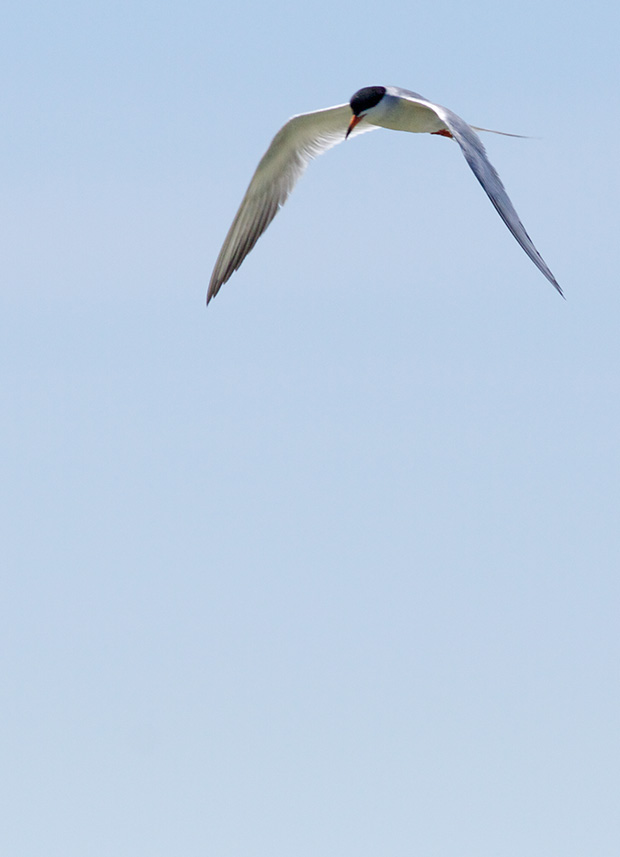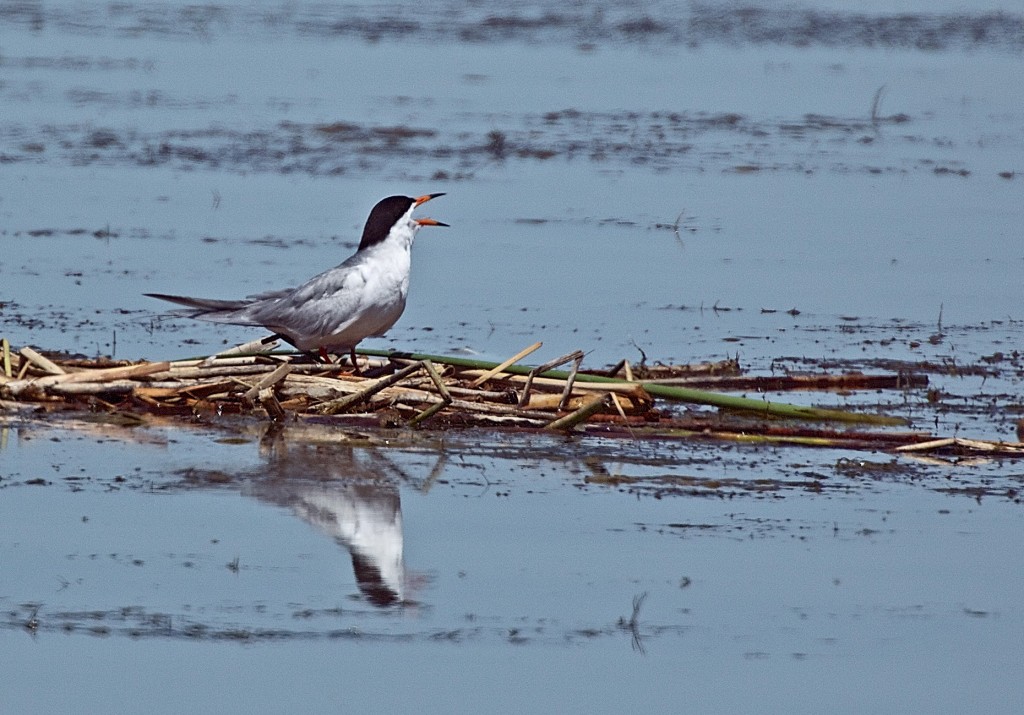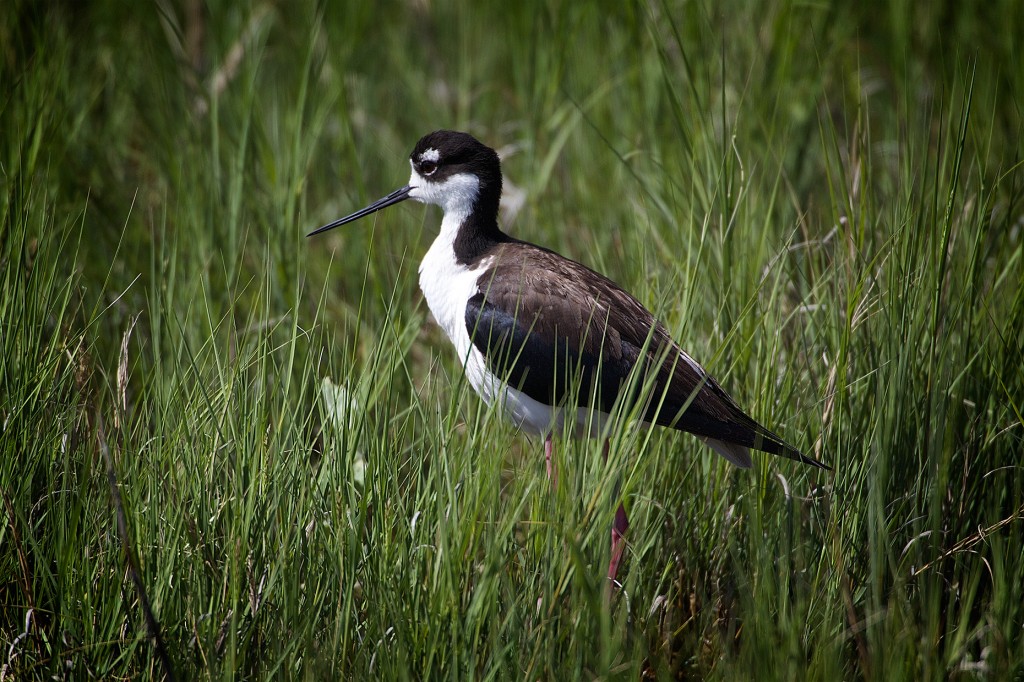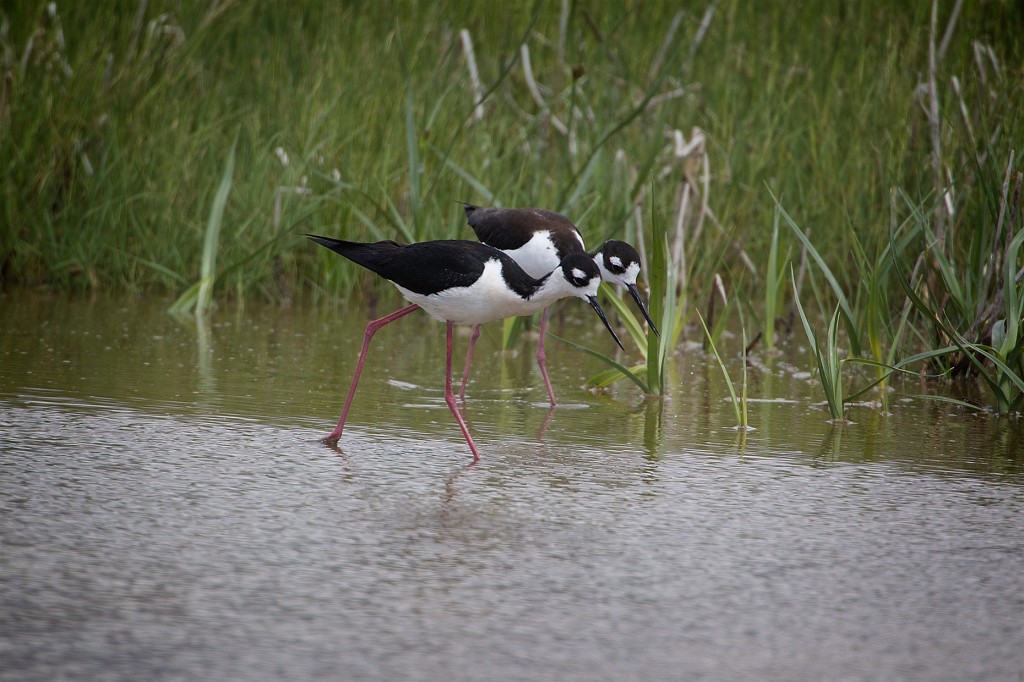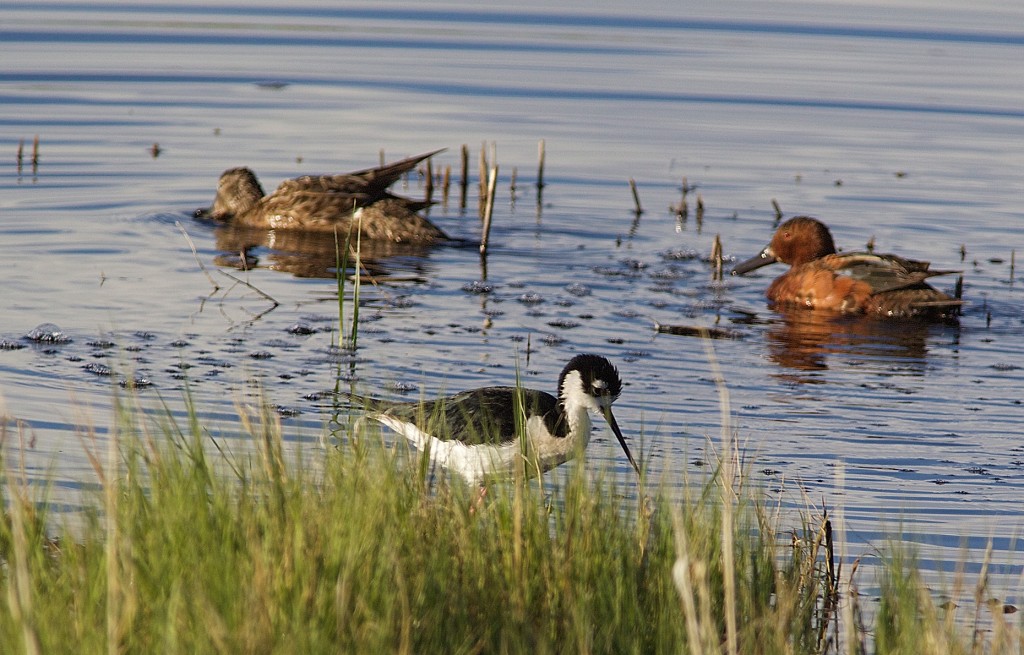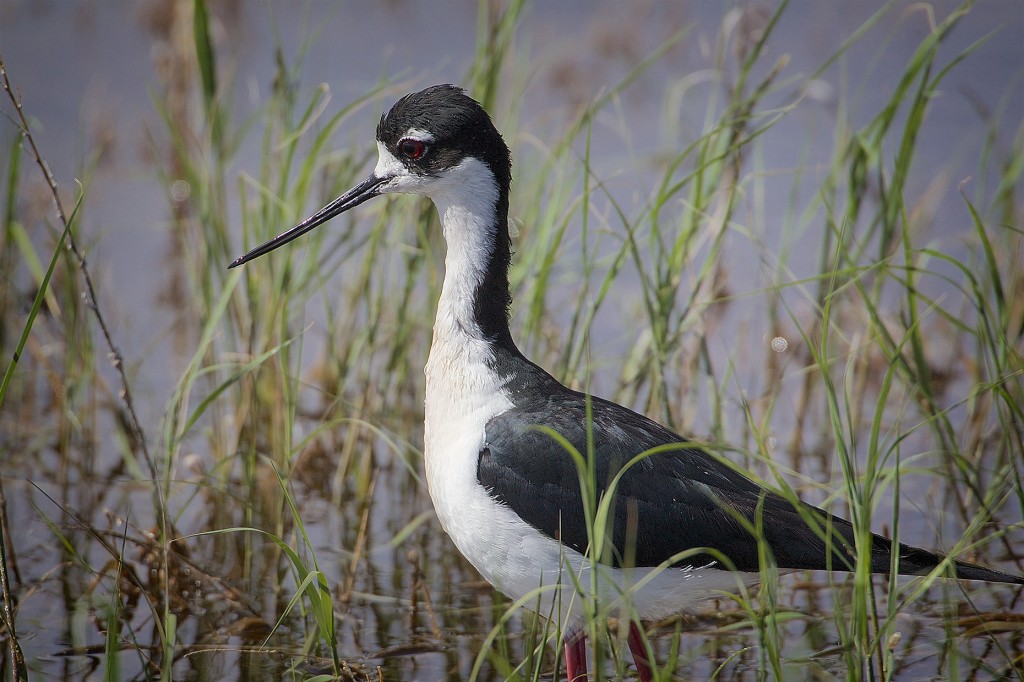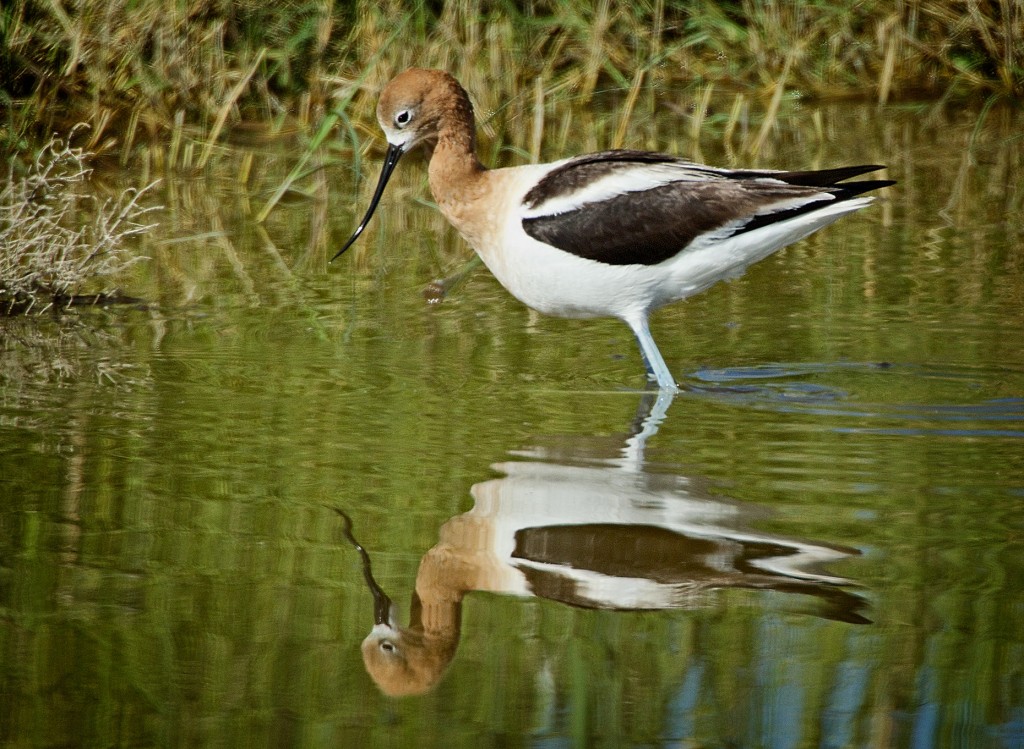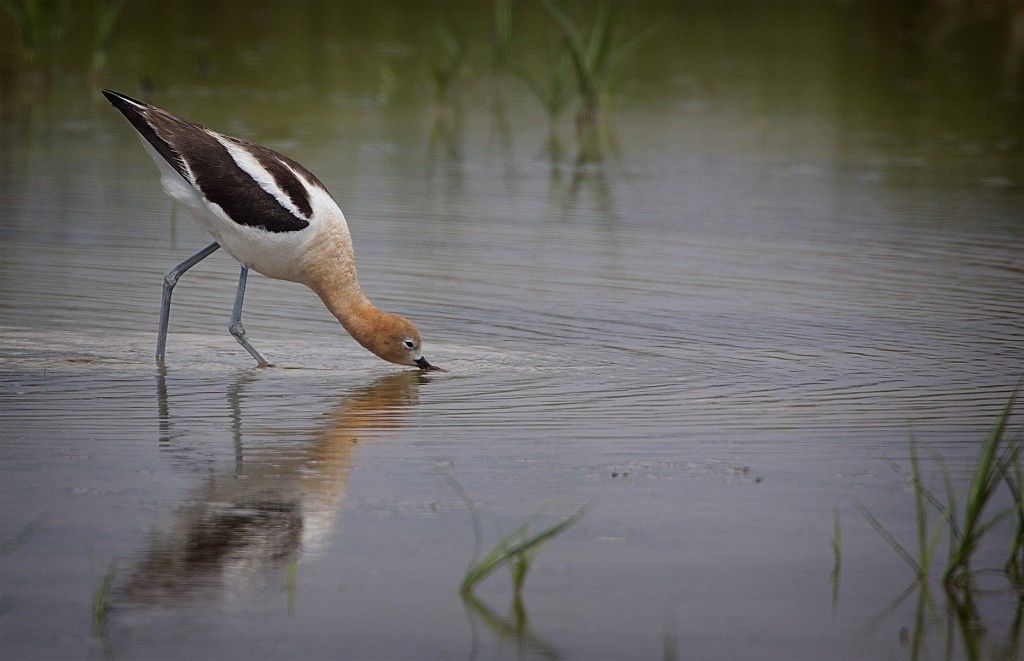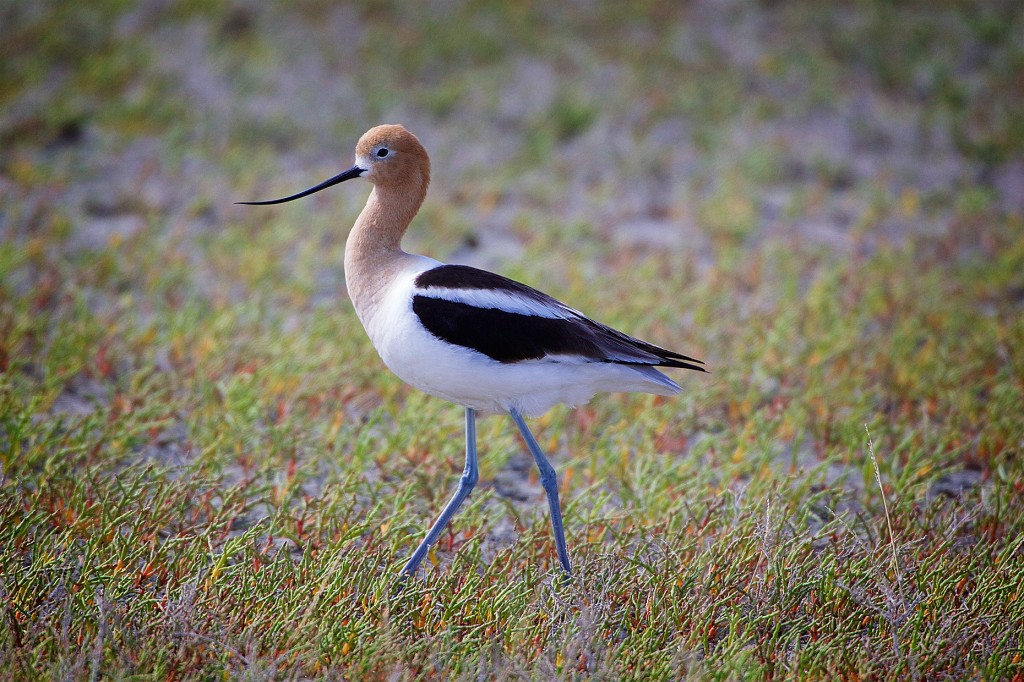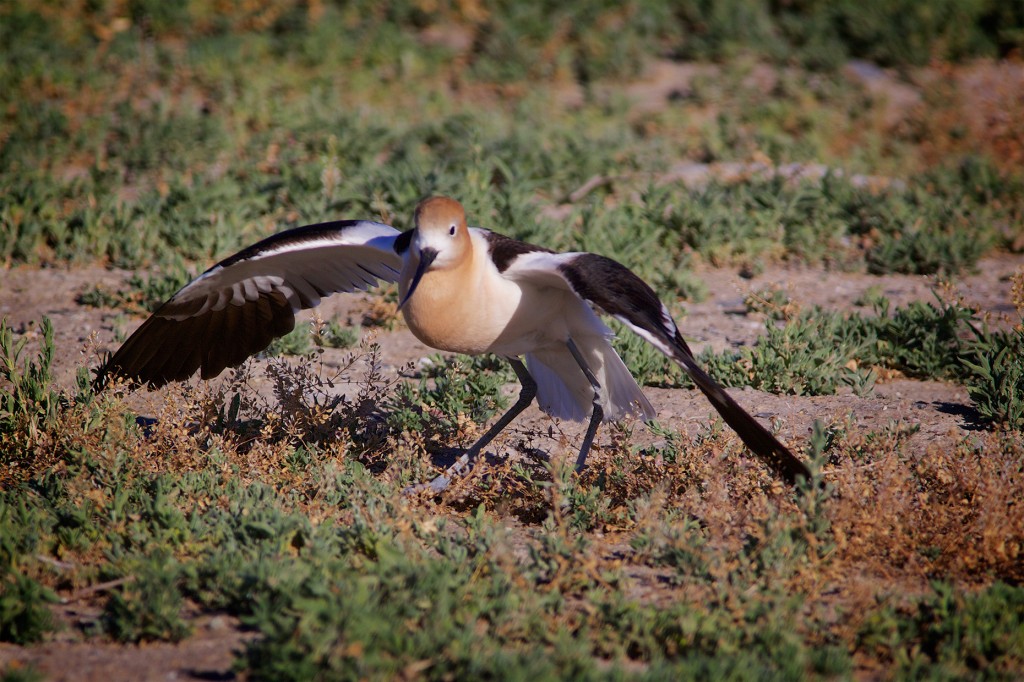Although a Utah birder told me that the White Pelicans weren’t very active yet and that the best time to see them was in late summer when carp are exposed by low water and in winter when freezes kill large numbers of carp, I was fascinated watching small flocks fishing, or at least that’s what they seemed to be doing.
In fact, they almost seemed to be “rowing,” or perhaps “herding” fish because they would all duck their head and raise it at the same time, all the time moving steadily forward. Of course, it didn’t take long to clarify this online:“Instead of diving for food the way brown pelicans do, white pelicans swim on the surface in a semicircle and herd the fish to shallower water near the shore. Then using their pouches as fishnets, the white pelicans submerge their heads and necks and scoop up the fish.”
Luckily I didn’t reveal my ignorance by saying that I had hoped to get pictures of them diving for fish like the brown pelicans do on our coast. Doesn’t take too much thought to realize that diving into shallow water like this would be far too dangerous while it would be nearly impossible to herd fish in the ocean using this technique.
Once again I felt I really needed to read the instructions on how to switch my Canon EOS 5D on film mode so that I can capture moments like this, but there are so many other aspects of still photography that I want to explore that I keep resisting spending the time on film making.
Instead of worrying about what I don’t know and don’t have, I focused on what I can do best, capturing still shots, and, luckily, this is probably the closest I have ever gotten to White Pelicans. This one was so close that I had to join two shots together to get it in the frame.
This one was further away but there was more light, which revealed a very different colored Pelican.
And, of course, with a 1000mm lens (500mm x doubler) you can almost reach out and touch the pelican’s bill, (especially if you click twice on the picture)
which certainly reminds us just how ancient these birds are.






